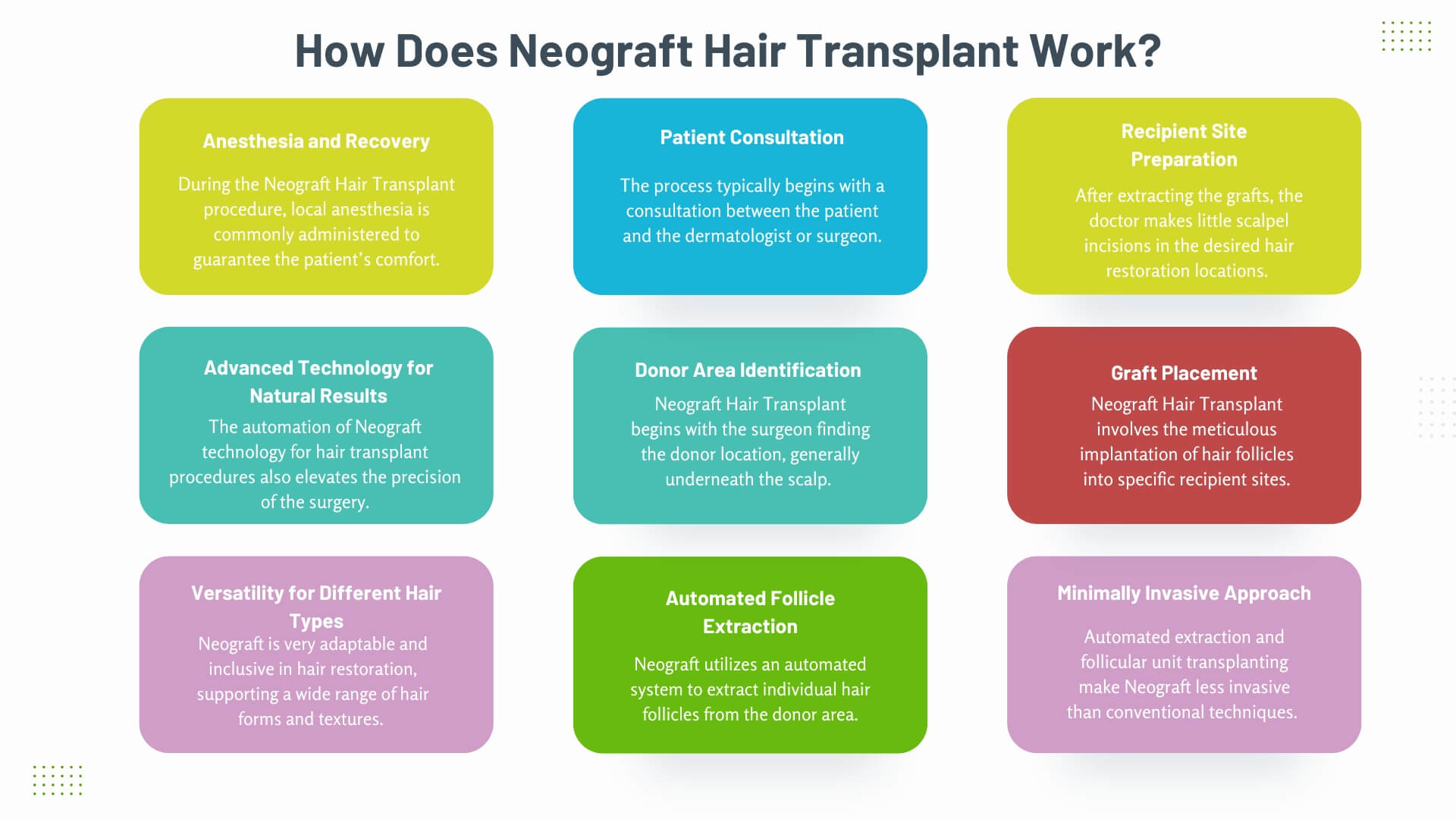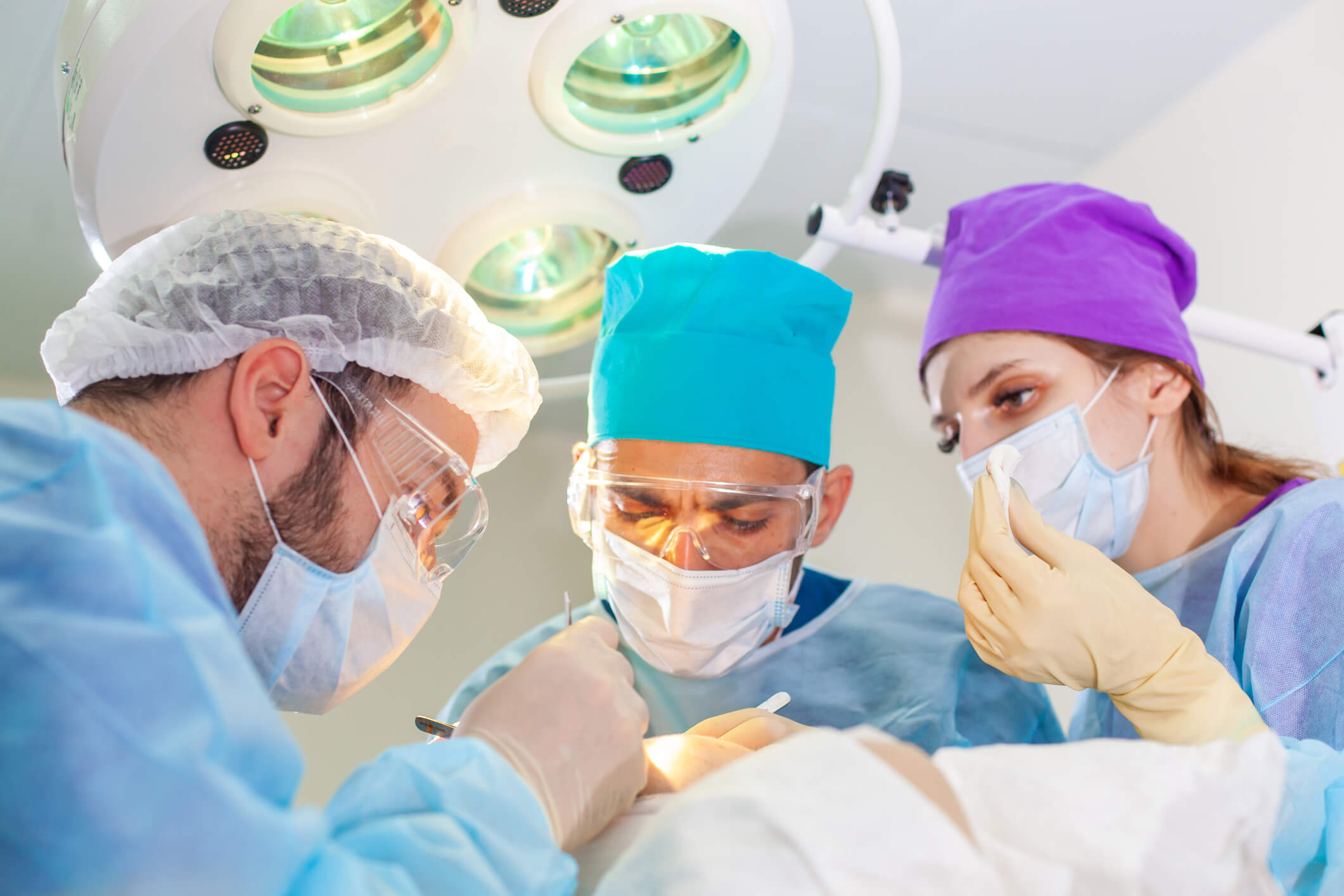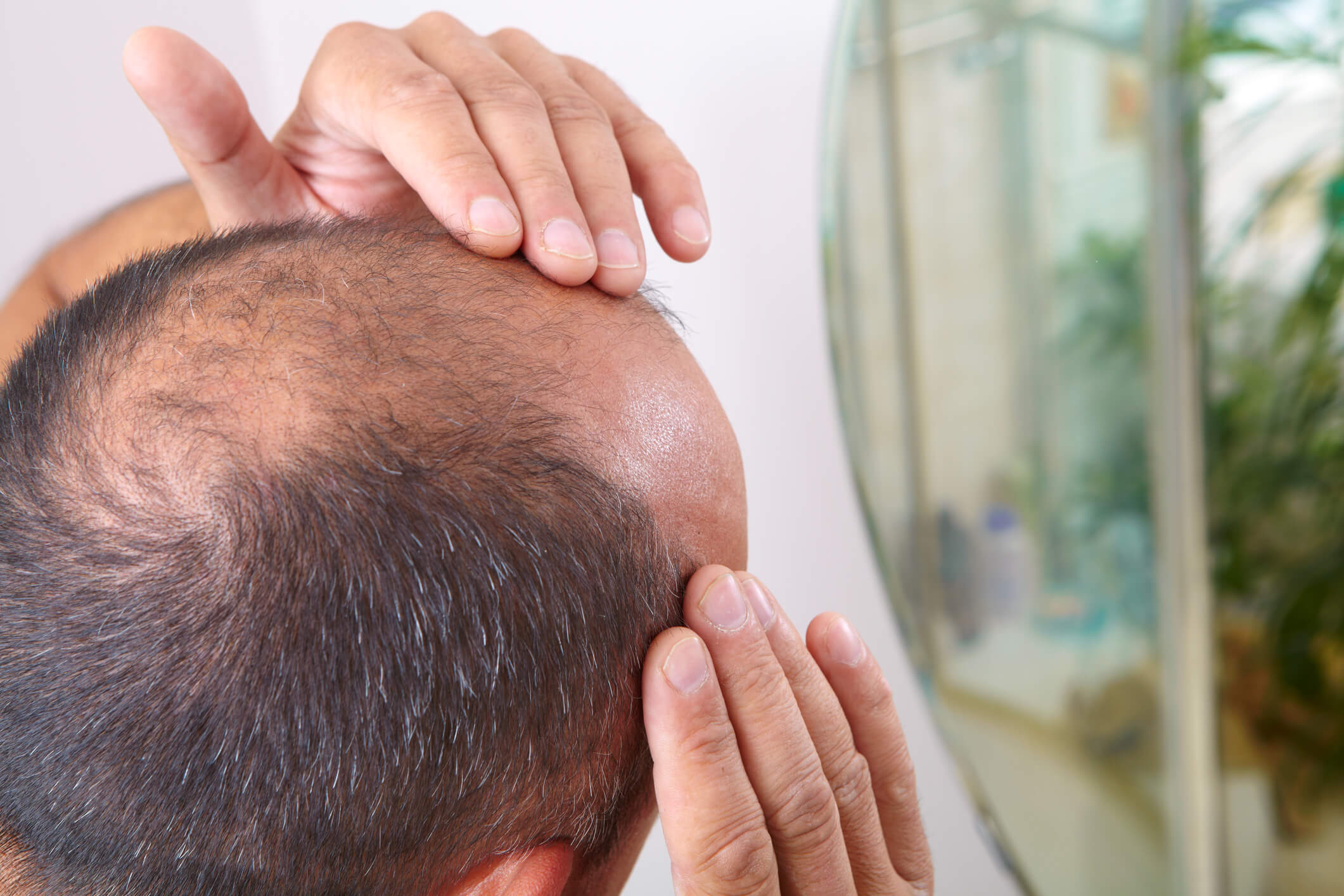What is a Neograft Hair Transplant?
Hair loss can be an upsetting event for many people, affecting their self-esteem and confidence. Fortunately, technological advancements have paved the way for innovative solutions, and Neograft Hair Transplant is one such revolutionary approach that has gained popularity in hair restoration. In this blog, we will delve into what Neograft Hair Transplant is, how it works, its advantages, and why it stands out among traditional hair transplant and FUE techniques.
Understanding Neograft Hair Transplant
Neograft Hair Transplant leads the way in hair restoration technology, employing the innovative Follicular Unit Extraction (FUE) technique. Diverging from conventional methods, Neograft distinguishes itself by automating the extraction of hair follicles. This automated Neograft hair restoration procedure ensures precision while minimizing the invasiveness of the hair restoration surgery, providing patients with a more efficient and comfortable experience. Neograft Hair Transplant is a groundbreaking method that solves the issue of baldness by carefully harvesting healthy hair follicles from donor locations and implanting them into areas of hair loss or balding.
Through its advanced hair transplant technology, Neograft replaces the traditional manual extraction of hair follicles with a streamlined and precise automated process. This not only elevates the overall precision of the surgery but also significantly reduces its invasiveness, positioning Neograft as a patient-friendly choice in the realm of hair transplants.

Infographic on How Neograft Hair Transplant Work in Newport Beach, California at Neograft Hair Restoration Orange County
How Does Neograft Hair Transplant Work?
Neograft Hair Transplant works through an innovative process known as Follicular Unit Extraction (FUE), which distinguishes it from traditional hair transplant methods. Let’s delve into the detailed steps of how Neograft Hair Transplant works:
1. Patient Consultation
The process typically begins with a consultation between the patient and the dermatologist or surgeon. During this consultation, the patient’s specific hair restoration goals are discussed, and the suitability of Neograft for their unique case is assessed. Once the patient’s specific hair restoration goals are discussed, and the suitability of Neograft for their unique case is assessed, the Neograft hair transplant procedure can address a wide range of concerns, including hair thinning, by effectively and seamlessly transplanting individual hair follicles to the desired areas.
2. Donor Area Identification
When considering Neograft Hair Transplant, the first stage entails the surgeon identifying the donor area, usually situated at the rear of the scalp. This particular region is chosen because of the inherent genetic resistance of its hair follicles to the hormone accountable for hair loss. The selection of this area is strategic, with the goal of utilizing follicles that are more resistant to factors leading to baldness. Through judicious donor site selection, Neograft guarantees the extraction of resilient hair follicles that are better prepared to flourish and withstand the impact of hair loss, ultimately leading to a more effective and enduring outcome in hair restoration.
3. Automated Follicle Extraction
Neograft utilizes an automated system to extract individual hair follicles from the donor area. The process involves the application of pneumatic pressure, ensuring a gentle and precise extraction mechanism that minimizes trauma to the scalp. This automated approach not only enhances the efficiency of follicle extraction but also contributes to a more comfortable experience for the patient. The controlled and automated nature of the procedure with pneumatic pressure ensures that the surrounding scalp tissues are subjected to minimal disruption, promoting quicker healing and reducing the risk of complications associated with traditional manual extraction methods. The result is a more refined and less invasive process, aligning with Neograft’s commitment to providing advanced and patient-friendly solutions in the field of hair transplantation.
4. Recipient Site Preparation
After harvesting the grafts, the medical professional proceeds to prepare the recipient site through the creation of minor scalpel incisions in specific areas seeking hair restoration. These incisions are precisely positioned to achieve a carefully crafted and natural aesthetic in both the hairline and the pattern. The strategic placement guarantees that the transplanted hairs blend seamlessly with the existing ones, producing an aesthetically pleasing and harmonious outcome for individuals undergoing hair transplant procedures.
5. Graft Placement
Neograft Hair Transplant involves the meticulous implantation of hair follicles into specific recipient sites. The automated precision of Neograft technology is pivotal in ensuring the accurate placement of these grafts, resulting in a uniformly distributed pattern that faithfully mirrors the natural hair growth. This automated precision not only fosters a seamless and natural aesthetic but also amplifies the overall efficacy of the hair restoration treatment.
6. Minimally Invasive Approach
Neograft distinguishes itself through its automated extraction and follicular unit transplantation processes, markedly decreasing the invasiveness of the procedure in stark contrast to conventional methods. This emphasis on a minimally invasive approach translates into accelerated recovery times for patients, minimizing discomfort and postoperative complications. Moreover, the reduction in scarring further underscores the advantages of Neograft, offering individuals a hair transplant experience that aligns with modern preferences for less invasive and more efficient cosmetic treatments.
7. Anesthesia and Recovery

Patient recieving a Neograft Hair Transplant from a Trusted Cosmetic Surgeon in Newport Beach, California at Neograft Hair Restoration Orange County
During the Neograft Hair Transplant procedure, local anesthesia is commonly administered to guarantee the patient’s comfort. This ensures that the patient experiences minimal discomfort throughout the process. Additionally, the recovery phase following Neograft is generally swifter than that of traditional methods, enabling patients to return to their regular activities swiftly. Using local anesthesia contributes to a more comfortable experience during the procedure. It aligns with the faster recovery period associated with Neograft, offering individuals a convenient and efficient approach to hair restoration.
8. Advanced Technology for Natural Results
The automation of Neograft technology for hair transplant procedures also elevates the precision of the surgery. This advancement ensures that the extracted hair follicles are implanted with meticulous accuracy, leading to a result characterized by a seamlessly natural hairline and growth pattern. Integrating Neograft’s automated precision contributes to an outcome that harmoniously blends with the patient’s existing hair, providing a natural and aesthetically pleasing appearance. This innovative approach not only simplifies the transplant process but also significantly enhances the overall quality and authenticity of the results, meeting the expectations of individuals seeking a reliable and natural-looking solution for hair restoration.
9. Versatility for Different Hair Types
Neograft stands out as a versatile and inclusive solution in the realm of hair restoration, accommodating a wide range of hair types with different textures and characteristics. Its adaptability is a key feature, ensuring that individuals with diverse hair profiles can benefit from this innovative technology. Whether dealing with curly, straight, thick, or fine hair, Neograft’s versatility provides a comprehensive approach to address the unique needs of each individual. Neograft technology extends its benefits beyond scalp hair restoration to encompass beard and facial hair transplants. This innovative approach offers individuals seeking fuller, well-defined facial hair a precise and minimally invasive solution.
The automated extraction and implantation process ensures natural-looking results, creating a well-groomed and aesthetically pleasing beard or facial hair pattern. Neograft’s versatility makes it a promising option for those desiring a more defined and confident facial appearance.This inclusivity underscores Neograft’s effectiveness as a solution for a diverse range of people seeking to restore and enhance their hair, regardless of their hair type or texture.
In conclusion, Neograft Hair Transplant works by combining advanced technology, automated processes, and a minimally invasive approach to provide patients with natural and effective results in hair restoration. The precision and efficiency of Neograft make it a cutting-edge solution for those seeking a reliable and comfortable path to combat hair loss.
Conclusion
Neograft Hair Transplant represents a significant leap forward in hair restoration. Its automated, minimally invasive approach offers patients a more comfortable experience with natural-looking results. As technology advances, Neograft stands as a beacon of hope for those seeking a reliable and effective solution to hair loss, boosting their appearance and confidence. If you’re considering a hair transplant, exploring the possibilities Neograft offers could be the key to unlocking a fuller, more vibrant head of hair.

Frequently Asked Questions
Here are some FAQs about Neograft Hair Transplant In Orange County:
Q. Are there any risks or side effects associated with Neograft Hair Transplant?
Neograft Hair Transplant is generally considered safe and minimizes many risks associated with traditional hair transplant methods. However, as with any medical procedure, there are potential risks and side effects. These may include minor swelling, redness, or discomfort in the treated areas, which are usually temporary. In rare cases, patients may experience infection or scarring. It’s crucial to consult with a qualified and experienced medical professional to assess individual candidacy and discuss potential risks based on one’s health and medical history. While Neograft offers a more advanced and less invasive option for hair restoration, thorough consultation with a healthcare provider ensures a personalized approach and minimizes any potential complications.
Q. Who is a good candidate for Neograft Hair Transplant?
An ideal candidate for Neograft Hair Transplant is someone experiencing hair loss or thinning hair who seeks a minimally invasive and precise solution for hair restoration. Neograft for women and men with different hair types and textures can be suitable. Good candidates typically have a stable donor hair area, often at the back of the scalp, from which hair follicles can be harvested. Neograft is an excellent option for those looking to avoid the linear scar associated with traditional hair transplant methods. The procedure’s versatility, precision, and quick recovery make it an attractive choice for individuals seeking a natural-looking and effective hair restoration treatment.
Q. How much does Neograft typically cost?
The cost of the procedure varies depending on a variety of factors, including the degree of hair loss, the number of grafts necessary, and the clinic’s location. On average, neograft surgeries cost between a few thousand and several thousand dollars. A trained hair transplant practitioner should be consulted for a personalized assessment, as they can provide a more accurate estimate based on specific needs and goals. Understanding each case’s individual requirements is critical in estimating the overall cost of the Neograft Hair Transplant operation.
Q. What is the recovery time after undergoing Neograft Hair Transplant?
The recovery time after undergoing Neograft Hair Transplant is relatively quick compared to traditional hair transplant methods. Patients typically experience minimal discomfort, and the automated nature of the procedure contributes to a faster healing process. While individual recovery times may vary, many people can resume their regular activities within a short period, often within a week. The reduced invasiveness of Neograft results in less postoperative discomfort and a quicker return to normal daily routines, making it an attractive option for those seeking a timely recovery following a hair transplant procedure. Moreover, Over 85% of patients who undergo Neograft Hair Transplant experience natural-looking hair growth within 9-12 months.
Q. How long does a Neograft procedure take?
The duration of a Neograft Hair Transplant procedure can vary depending on individual factors such as the extent of hair loss and the number of grafts being transplanted. On average, a Neograft session typically ranges from four to eight hours. The procedure’s meticulous nature, involving the extraction and transplantation of individual hair follicles, contributes to the time required for a successful and precise outcome. It’s important for individuals considering Neograft to consult with their healthcare team to get a more personalized estimate based on their specific needs and goals.
Q. What is the success rate of Neograft Hair Transplant?
The success rate of Neograft Hair Transplant is generally high, with many patients reporting good and long-lasting results. The precision and automation of Neograft technologies make hair transplant procedures more efficient and accurate, increasing the likelihood of success. Individual results, however, may differ depending on the patient’s overall well-being, adherence to post-operative treatment, and the surgical team’s experience. Consulting with a certified healthcare practitioner or a Neograft specialist can provide more personalized information about the procedure’s possible success depending on unique conditions and expectations.
Related Posts
- Hair Restoration Statistics 2023
- Do Hair Transplants Really Work?
- What Are The Pros And Cons Of A Hair Transplant?
- Do Hair Transplants Last Forever?
- How to Stop Alopecia Areata From Spreading
- Can Dandruff Cause Hair Loss?
- Can Shampoo Cause Hair Loss?
- Beard and Facial Hair Transplants
- What’s the Difference Between Hair Shedding and Hair Loss?


Recent Comments